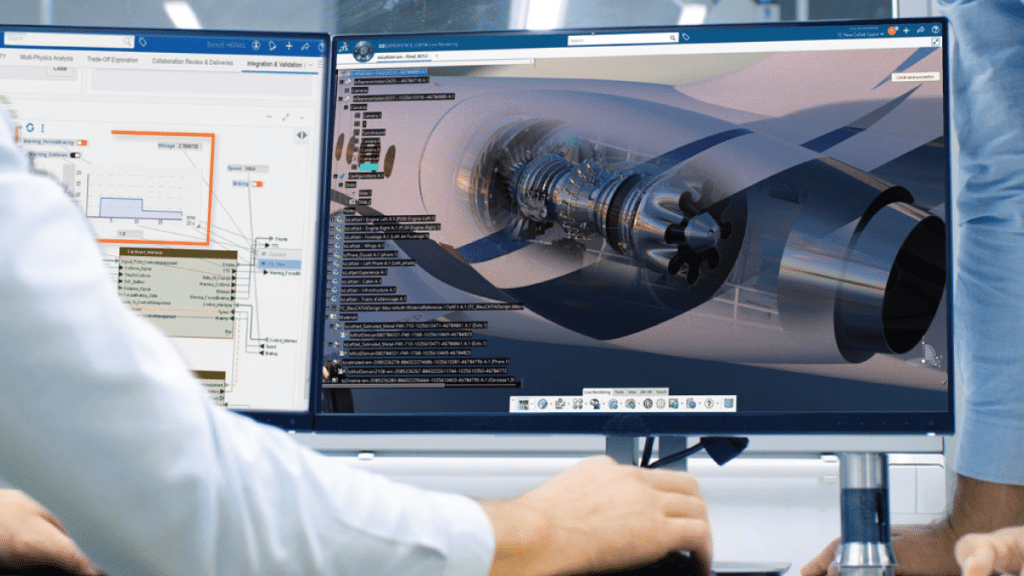
Introduction
In the high-stakes, intricate engineering world, project managers and engineers constantly seek robust methodologies to streamline the design and development processes. One approach that has gained significant traction over the years is Model-Based Systems Engineering (MBSE). The technique is heralded as a game-changer for complex engineering projects, especially those that require intricate designs and cross-functional collaboration.
This article aims to provide a comprehensive overview of MBSE, its implementation’s practicalities, its myriad benefits, and the challenges that come with its adoption. So whether you’re a seasoned engineer, a budding project manager, or simply someone fascinated by engineering trends, this article has something valuable for you.
What is Model-Based Systems Engineering?
MBSE is a methodology that employs a systematic approach to engineering by leveraging models as an integral part of the process. Unlike traditional methods that use extensive documentation, MBSE provides a structured environment that offers both a conceptual and a physical representation of the system. This allows for better understanding, communication, and collaboration among team members, thereby enhancing the quality and effectiveness of engineering outcomes.
The Benefits of Adopting Model-Based Systems Engineering in Complex Engineering Projects
- Improved Communication
One of the key benefits of MBSE is that it enhances communication across different departments. The visual representation of models allows for a more coherent and easily understood articulation of complex engineering ideas.
- Risk Mitigation
Using models makes it easier to identify potential bottlenecks, risks, or system failures early in the project. This proactive approach ensures that preventative measures can be taken in advance, thereby reducing the overall project risk.
- Time and Cost Efficiency
By replacing the cumbersome traditional documentation, MBSE simplifies the tracking and updating of system elements. This translates into both time and cost savings, especially in the long run.
- Enhanced Quality
The meticulous detailing provided by MBSE ensures higher fidelity in the system’s design and functioning, thereby elevating the quality of the end product.
Challenges in Implementing Model-Based Systems Engineering
Initial Investment and Training
The initial setup for MBSE often requires a considerable investment in software tools and training. This can be a hindrance for smaller companies or projects with limited budgets.
Complexity of Tools
MBSE tools can be complex and may have a steep learning curve, requiring specialized skills and training.
Resistance to Change
Older, more traditional engineering cultures may resist the shift towards a model-based approach, preferring to stick with tried-and-tested methods.
Practicalities of Model-Based Systems Engineering Implementation
- Software Selection: Choose the right MBSE software that fits your project needs and budget.
- Training: Invest in comprehensive training programs to ensure your team is well-equipped to handle the tools.
- Pilot Testing: Before full-scale implementation, run a pilot test to identify potential pitfalls or improvement areas.
Future Trends and Advances
- Integration with AI: As artificial intelligence continues to advance, expect to see it integrated into MBSE tools for predictive analysis and automated system optimization.
- Cloud-Based Systems: The future may see MBSE solutions transitioning to the cloud, allowing more accessible collaboration and data sharing.
- Open Source Tools: Open-source MBSE tools could democratize the technology, making it accessible to smaller firms and individual developers.
Real-world Examples of Successful MBSE Implementation
Model-Based Systems Engineering (MBSE) has revolutionized the landscape of complex engineering projects. While the methodology promises numerous benefits, it has challenges and limitations. In this part of this article, we aim to provide a balanced view of MBSE through real-world examples and practical advice on implementing the system effectively.
Aerospace Industry: Mars Rover Mission
NASA successfully used MBSE to streamline the complex engineering requirements of the Mars Rover Mission. Through model-based techniques, NASA could visualize different mission scenarios, making planning and coordinating among various interdisciplinary teams easier.
Automotive Industry: Electric Vehicle Development
Tesla Motors implemented MBSE to accelerate the design process of their electric cars. With MBSE, they could simulate and test various battery and engine configurations, thereby shortening the development cycle and reducing costs.
Limitations and Potential Downsides
Over-reliance on Tools
MBSE is only as good as the software supporting it. An over-reliance on these tools and understanding their limitations can result in better design decisions.
Not Suitable for All Projects
MBSE can be overkill for less complex projects and may cost more time and money than traditional methods.
Practicalities of MBSE Implementation: Choosing the Right Software and Training Programs
Recommendations for Software:
- SysML Tools: Systems Modeling Language (SysML) tools like IBM Engineering Systems Design Rhapsody or MagicDraw offer robust functionalities.
- Simulation Software: Choose software that allows for real-time simulation, like MATLAB Simulink, for a dynamic understanding of your models.
Training Programs:
- INCOSE Training: The International Council on Systems Engineering (INCOSE) offers accredited MBSE training programs.
- Vendor-Specific Training: Companies offering MBSE tools often have in-depth training programs for their software.
Conclusion
Implementing MBSE offers undeniable benefits but also poses its own set of challenges and limitations. From increased communication to potential over-reliance on complex tools, the pros and cons of MBSE must be thoroughly considered for successful implementation.
Incorporate real-world examples into your planning, make a calculated choice on the MBSE software, and invest in specialized training to make the most out of this revolutionary engineering methodology.
Model-Based Systems Engineering is more than just a buzzword; it’s a robust methodology with tangible benefits for complex engineering projects. However, it does come with its set of challenges and practical considerations. By remaining informed and strategically implementing MBSE, organizations can harness its full potential, paving the way for efficient, high-quality engineering solutions.
Harness the power of MBSE in your next engineering project, and experience the transformative difference it can make.
If you’re looking to implement MBSE in your engineering projects and navigate the challenges and limitations that come with this revolutionary methodology, Convergence Consulting can help. They offer expertise in real-world examples, helping you make a calculated choice of MBSE software and specialized training to make the most out of this robust approach to engineering. Embracing MBSE with the guidance of Convergence Consulting can result in efficient, high-quality engineering solutions that transform your projects. Don’t miss out on the transformative difference that Convergence Consulting can make in your next engineering project.
Experience the power of convergence with Convergence Consulting. Let us unlock the full potential of your ideas and help you achieve your business objectives. Contact us today to discover how we can collaborate to drive innovation and success together.

Leave a Reply